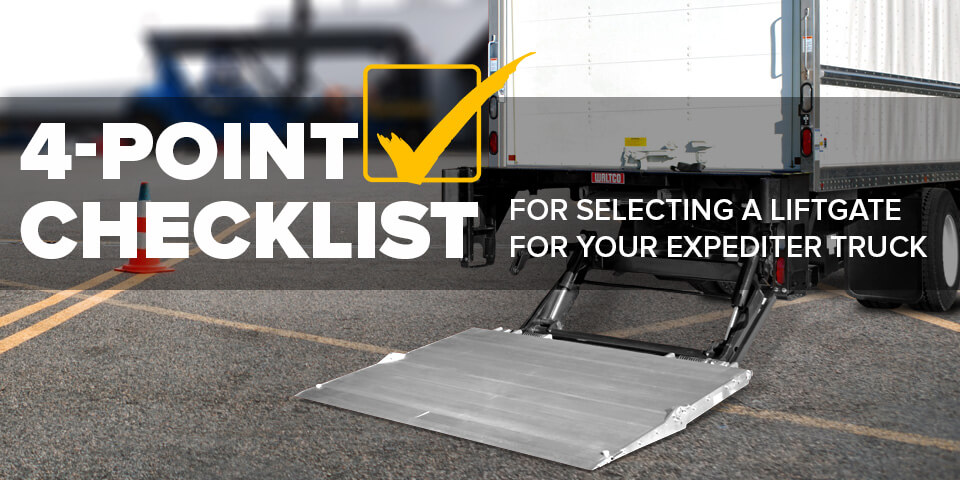Truck Topics

4-Point Checklist for Selecting a Liftgate for Your Expediter Truck
A liftgate mounted on the rear of your truck enables you to load and unload heavy cargo more efficiently, in a way that reduces your injury risk and shortens delivery times. But when it comes to liftgates, one size (or type) does not fit all applications. So, how do determine what's best for your business--and budget? Use this checklist to help you gather the information you need to make a smart decision.
1. Type of Liftgate
The first step is to choose the most appropriate liftgate style for your business. Here are the four primary styles to consider.
- Tuckaway. (Also called a tuck-under and stow-away liftgate.) As the name suggests, this liftgate tucks out of the way, under the rear of the truck body, offering easy access to cargo when not using the gate. You'll see this style liftgate on a lot of expediter trucks because of its versatility, where you can back the truck up to a loading dock without having to move the liftgate out of the way, as you would with other types of gates. Example: http://www.anthonyliftgates.com/Liftgates/TuckUnder
- Rail-style gate. This gate is attached to the rear pillars of the truck box, offering extra platform size for larger cargo and heavier-weight capacities. The downside is the railgate can make it more difficult--and time consuming--for dock deliveries because you will need to lower the gate straight down when you approach the dock and then bridge the gap between the rear of the truck and the dock. Example: http://www.autotruck.com/products/liftgates/rail-gate
- Cantilever. The cantilever offers larger platform options, like the railgate, but without taking up space on the rear pillars of the truck body. Instead, the cantilever is welded to the frame of the chassis and closes in an upright position against the rear door of the truck. The gate can also be adjusted to provide a level loading platform, even when the ground is unlevel. However, the cantilever is not ideal for dock deliveries. Example: http://www.maxonlift.com/products/conventional/gpc-22-x1/spec-sheet
- Slider. This type of gate slides in and out from underneath the body on stationary tracks. And since it stores completely under the vehicle, it does not get in the way at loading docks. Example: http://www.climatecompanies.com/products/lift-gates/waltco-liftgates/waltco-slider-liftgates/
2. Weight Capacity
What is the weight of the heaviest item that you anticipate you will be loading and unloading with your gate? Remember to account for not only the weight of the cargo but also the packaging (e.g. pallet, box, barrel, etc.), the handcart or pallet jack, and of the operator (if someone will be on the gate with the load).
3. Platform Size
How will the product be transported onto the liftgate? Will the product require a pallet jack, a dolly or a cart? Will you need to also ride on the platform with the cargo? Your answers to these questions determine the platform dimensions you need to do the job.
4. Platform Material
Steel or aluminum? A steel gate is available at a lower upfront price, but the aluminum gate is much lighter--contributing to better fuel economy--and offers anti-corrosion benefits.
The Bottom Line
So, what liftgate spec would work best for your business? Do your research by using this checklist as your guide. Speak with successful expediters who use liftgates to find out how they spec their gates. What do they like about their gates? What would they improve? Also consult with your dealer to get their recommendations and feedback.
To learn more, check out these liftgate manufacturer's websites for more information on the styles and specs available.
